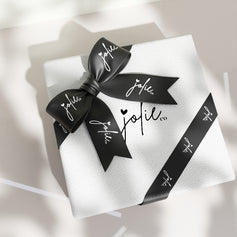Is Your Belly Piercing Truly Healed? What You Need to Know Before Changing Jewelry
Hey there, fearless fashionista. So, you took the plunge and got that belly piercing you've been dreaming of. But now, the waiting game is real, and patience isn't always our strongest suit, right? Let's dive deep into understanding if your belly ring is truly healed and how to resist the itch of switching out your jewelry too soon. You’ll be glad you did.
Signs Your Piercing Has Healed:
Absence of Redness and Swelling: In the initial stages of healing, redness, swelling, and an itchy feeling are all perfectly normal. However, these symptoms tend to reduce with time. Eventually, the redness around the piercing is gone and the color of skin around the piercing holes matches the rest of your skin. Your jewelry may appear longer as the swelling decreases.
No Pain or Discomfort: A healed piercing feels comfortable, even when touched or moved. Counter to common belief, you should never move your jewelry much, even when fully healed.
Clear Discharge or None at All: Some discharge from your belly piercing is normal and is usually a clear or slightly yellow liquid called lymph. The discharge may form crusts around the jewelry. All this is part of the healing process, and eventually will stop. Even when fully healed there may still be a clear, thin discharge from time to time.
Fully Formed Fistula (Piercing Channel): This is an internal channel of skin that forms around the jewelry. While it's hard to see, once it’s fully formed, the piercing feels settled and doesn't get irritated easily.
Considerations Before Changing Jewelry:
Don’t Rush: Some of us heal very quickly or, at least, it may appear we do. It is quite common for the outer skin to look healed. Just because there’s no discomfort, it doesn’t mean the inner channel is fully formed. Unless there are specific reasons, i.e., the jewelry is too long, you should wait at least three months before the initial change.
Less is More: Frequently changing jewelry, especially shortly after healing, can irritate the piercing and potentially cause complications such as migration or worse - rejection. Many believe they’re out of the woods, but rejection can happen at any time, even five years after you’ve been pierced.
Quality Over Quantity: Always prioritize quality. Professional piercers know that your body responds better to high-quality materials such as 14k solid gold. Your piercing heals faster. This has been tried and tested, and we’ve known this for as long as piercings have been a form of self-expression. Ever wondered why surgical steel is not recommended for sensitive skin? But that’s not even it; if sensitivities develop over time, why would you take a chance?
The Piercer is Your Friend: Before making your first jewelry change, consider visiting your piercer. They’ll do more than ensure the piercing is fully healed, they’ll provide you with tips and tricks, and safely switch the jewelry for you.
Changing Yourself: Think of the motion of your hand putting a spoon through ice cream. Let’s assume it’s not frozen and you don’t have to fight with it. Follow the same scooping motion with your hand, and the jewelry will easily find its way through the piercing channel. Removing it is no different. The most common mistake is jamming the jewelry straight in; although it often works, you will injure yourself in the process.
Jewelry Considerations: Let’s say you’ve been patient and waited, your piercing feels normal and you’re ready for the change. What jewelry style do you change to? The jewelry should fit a certain way, not just because it looks better, but rather because it protects your piercing. And before you even consider jewelry, you should consider your navel’s anatomy and the placement of your piercing. This is a longer topic, but if you’re looking for a professional recommendation, reach out to our Piercing Concierge™.
Aftercare Continues: Even after changing jewelry, maintain a diligent aftercare routine. This ensures the piercing remains healthy and adapts well to the new jewelry.
In closing:
Your belly piercing is more than a fashion statement — it's a reflection of who you are. It deserves care, patience, and attention. As you navigate the healing process and dream of your next jewelry change, remember to prioritize your piercing's health above all.
We post educational content on social media regularly so make sure to give us a follow. You’ll be glad you did. TikTok, YouTube and Instagram
XOXO ‘til next time, Alyssa Jolie



